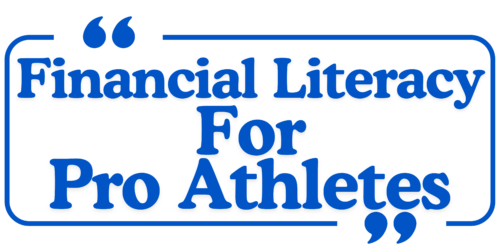Professional athletes have unique financial challenges and opportunities due to their high earnings, relatively short career spans, and fluctuating income levels. A sound financial plan is essential to help them preserve wealth, ensure long-term financial security, and transition smoothly into life after sports. Here’s an overview of what a financial plan for a professional athlete should look like:
1. Income Management and Budgeting
Athletes often earn a significant portion of their career income in a short window, which requires careful management. A financial plan will include:
- Budgeting: Tracking daily and monthly expenses to ensure they live within their means, accounting for taxes, lifestyle, family, and discretionary spending.
- Income Smoothing: Since an athlete’s career can be unpredictable, smoothing out income through strategic savings ensures funds are available even during off-seasons or after retirement.
2. Tax Planning
Professional athletes often have complicated tax situations due to playing in different states or countries. A financial plan should cover:
- State Income Tax Optimization: Navigating “jock taxes” or state-specific income tax rates, ensuring proper filing for each jurisdiction in which they earned income.
- Deferred Income: Some athletes choose to defer part of their earnings to reduce their tax liability in high-income years, spreading income across lower-income years (like post-retirement).
3. Savings and Investments
Building wealth beyond their playing years requires smart saving and investing strategies, including:
- Emergency Fund: Setting aside at least six to twelve months’ worth of living expenses in liquid assets for unexpected costs or injuries.
- Investment Portfolio: Diversifying investments into stocks, bonds, real estate, and private equity to generate long-term wealth. Professional athletes should avoid putting all their money into one or two high-risk investments, like starting a business or investing solely in one industry.
- Retirement Accounts: Contributing to tax-advantaged retirement accounts such as 401(k)s or IRAs, ensuring financial security once their sports careers are over.
4. Risk Management and Insurance
Athletes face heightened risk due to potential injuries and short career spans. Proper risk management is a vital part of the financial plan:
- Disability Insurance: Ensuring adequate coverage in the event of a career-ending injury.
- Life Insurance: Protecting loved ones and dependents, especially if the athlete is the primary earner.
- Liability Insurance: Athletes are often public figures, and liability coverage can protect against lawsuits or accidents that could threaten their assets.
5. Career Transition Planning
Athletic careers are often short-lived, which means planning for a second career or post-sports life is essential:
- Education and Skill Development: Encouraging athletes to pursue education, build skills, and develop a network that can lead to opportunities after their playing days.
- Business Ventures: Some athletes may want to start businesses or invest in existing companies. A financial plan will assess risks and ensure that these ventures are part of a diversified portfolio, not the sole focus of their post-career income.
6. Estate Planning
Estate planning ensures that an athlete’s wealth is protected for their family and future generations:
- Wills and Trusts: A well-structured estate plan includes wills, trusts, and powers of attorney to ensure assets are passed on efficiently and in accordance with their wishes.
- Tax-Effective Gifting: Setting up gifting strategies or trusts to minimize estate taxes and provide for family or charitable causes.
7. Debt Management
Athletes can often be targeted for high-interest loans or mismanage large purchases. A financial plan ensures:
- Debt Repayment Strategy: Avoiding high-interest consumer debt and paying off mortgages, auto loans, and other debts in a structured, manageable way.
- Avoiding Predatory Practices: Many athletes are preyed upon by unscrupulous lenders or advisors, so it’s critical to have an advisor to vet financial decisions.
8. Charitable Giving
Many professional athletes are passionate about giving back to their communities. A financial plan includes:
- Charitable Contributions: Structuring donations through tax-efficient methods such as Donor-Advised Funds or private foundations.
- Philanthropic Planning: Helping athletes establish charitable organizations or give back through community initiatives while maximizing tax benefits.
9. Legal and Financial Advisor Team
Given the complexity of an athlete’s financial life, a solid team of professionals is necessary:
- Financial Advisor: To provide tailored advice, budgeting assistance, and long-term investment strategies.
- CPA/Tax Attorney: To ensure proper tax filing, optimization, and protection.
- Legal Counsel: To review contracts, endorsements, and business ventures, ensuring their interests are protected.
10. Lifestyle Planning
Athletes often face pressure to maintain a certain lifestyle, but financial plans should balance current enjoyment with future security:
- Moderate Spending: Keeping spending in line with long-term goals.
- Avoiding Lifestyle Inflation: Ensuring income and investments grow faster than expenses.
In conclusion, a comprehensive financial plan for a professional athlete encompasses everything from tax and income management to risk mitigation and investment strategies. With careful planning, athletes can ensure that the wealth they generate during their careers will sustain them long after they retire from the game.
Written by Pat Brown, MBA
